Call now to set up an appointment: (573) 433-4846
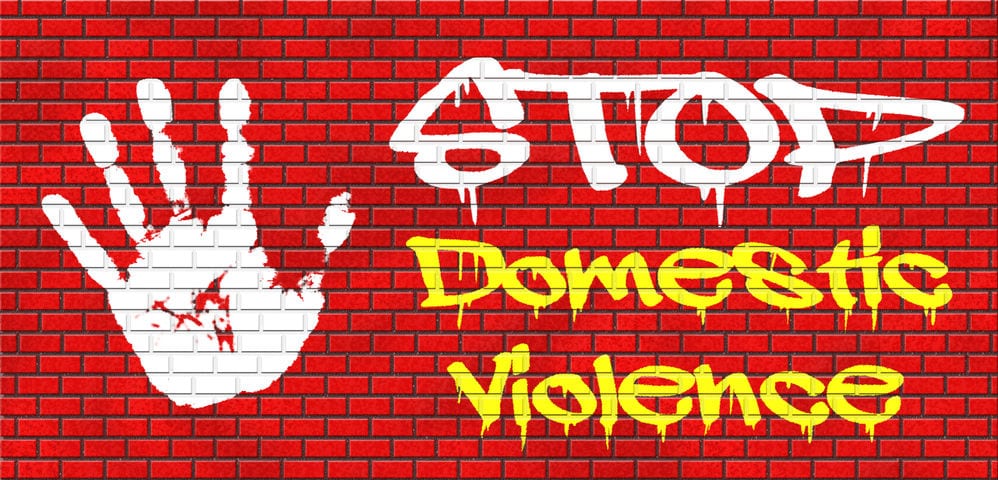
INTRODUCTION
All relationships have conflict. Getting angry, feeling hurt, and arguing are all part of relationships. We choose how to act and react to conflict. If we use violence or threats, or if we force someone to do certain things, that is abuse.
Some men blame their anger, their partner, alcohol, or drugs for their violence. Blaming someone or something else will not make violence go away. To stop being violent we must first want to be nonviolent and then commit to doing whatever it takes to change. We cannot change someone else. We must learn to take 100% responsibility for our own violent and abusive actions. This is not easy. We must do the hard work of looking at the permission we give ourselves to act the way we do. We must be willing to give up power and control and strive for equality. Violence and abuse destroy relationships, people, communities, self-respect, dreams, and our children’s future.
Our socialization as men teaches us that we are entitled to use violence when things aren’t going our way. Without counting the cost, we make the choice to use violence and abuse. It may take a crisis before we stop and look at ourselves. This crisis can be an opportunity to make a commitment to be nonviolent and ask: “How do I want to act in relationships?”, “Do I want to continue to hurt the people I love?”, “What can I do to make my life more complete and peaceful?”
Many men are court ordered to attend the classes and do not want to participate. We know you may find it hard to be here. We invite you to stay open-minded so that you can benefit from the men’s nonviolence program.
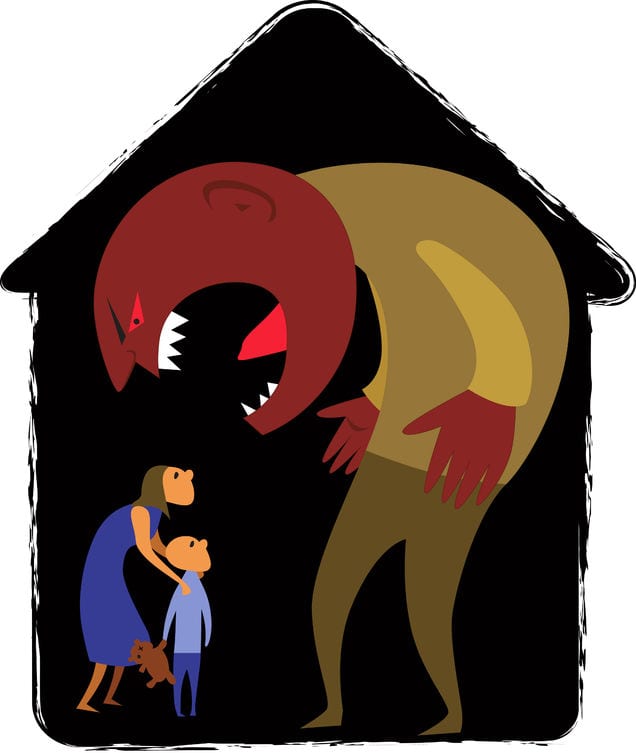
UNDERSTANDING DOMESTIC ABUSE
Many people believe that violence is caused by anger, stress, poor communication skills, problems with alcohol or drugs, or the loss of control. Although some of these factors may contribute to the problem (like pouring gas on a fire) and may make it easier to choose violence, they are not the reason for the violence. Violence is not about losing control, but rather about trying to get control over a person or situation. Domestic violence occurs when someone decides to use physical, sexual, emotional, and or spiritual abuse to get their way—Or to make someone do something, stop them from doing something, or punish them.
To understand why people use violence, we should ask what they wanted to make happen by using the violence. Violence is always an intentional choice. The choice may occur in a split second, but it is still a choice. Some people may regret using violence and wish they hadn’t, but at the time they chose to use violence, hey meant to do it. Domestic violence is likely to be a pattern of behaviors and is usually not a single isolated event.
Most of us start forming the belief that men are superior to women at an early age. When we act on these beliefs, we think we have the right to do whatever it takes to get the other person to obey us. The nonviolence classes examine these beliefs, their effects on us and others, and the way new beliefs can move us towards nonviolence and equality.
Changing a belief system is a lifelong journey that is both very challenging and very rewarding. Over the long term you, your partner, your family, and the community will gain tremendously. The next sections introduce some ideas you can act on now.
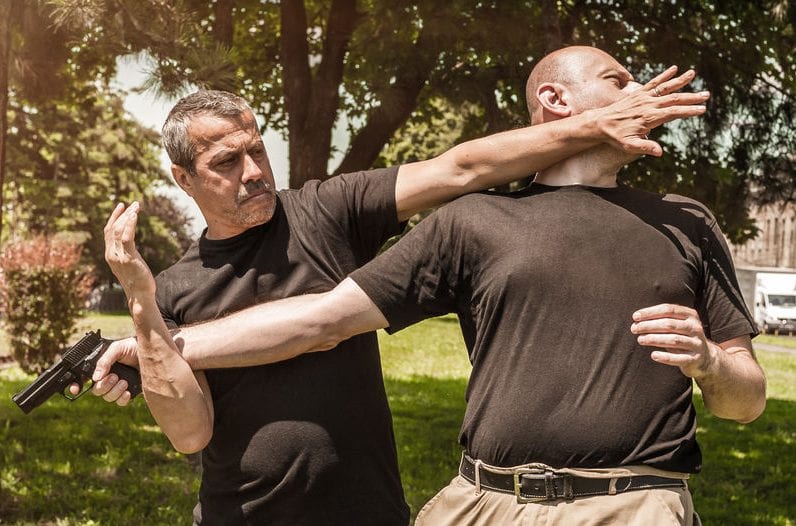 SELF-DEFENSE
SELF-DEFENSE
Self-defense is the minimal use of force necessary to defend oneself against the infliction of bodily harm. Many men state that their actions were in self-defense but later realize it wasn’t necessary to choose violence. Using violence as self-defense is always a last resort. Ask yourself: Could I have anticipated that the situation might become hostile and left at that point? Could I have talked my way out of the situation? Could I have left? Could I have called the police? Could I have yelled for help? If you could have done any of these things, then your actions were not self-defense. Also, you can use only enough force to gain safety. It is not self-defense to punish someone with excessive force or to use the situation as a justification for assaulting another person.

MEN’S NONVIOLENCE CLASSES
We hope this program will help you look inward to evaluate the cost of violence and experience the benefits of nonviolence. The nonviolence classes are not anger management or therapy groups. Their focus is not to “fix” your relationship, but to stop the violence and abuse that are destroying it. We will work with you to:
- Identify and practice non-controlling alternatives.
- Expand definitions of violence and controlling behaviors.
- Discuss the effects of violence on women, children and yourself.
- Examine your belief system and behaviors that support violence.
Your willingness to change is of the utmost importance. We hope you will find value in this education service and we invite you to set goals for positive change. After the orientation session, you will join a class.

CLASS RULES
- Come to class on time and stay until the end of the session.
- Participate in class discussions and cooperate with HCC staff
- Come to class free of the influence of alcohol or illegal drugs.
- Keep names and personal information I hear in class confidential.
- Remain nonviolent and do not use threats while involved with the BIP.
- Accept responsibility for my actions, focus on myself, and be reflective.
- Turn cell phones OFF during class time. (You can turn them on during the break.)
- Avoid using racist or sexist, language or wear clothing with degrading messages during class.
- Refer to my partner or ex-partner respectfully and by her first name (e.g. “Mary” not the “Old Lady”).
- Not bring weapons to class i.e. knives, guns, tasers, throwing stars, scissors, brass knuckles, screwdrivers, wrenches, pepper spray, etc.
 WHAT TO EXPECT FROM THE HOPE CONNECTIONS BIP
WHAT TO EXPECT FROM THE HOPE CONNECTIONS BIP
- To be treated with respect.
- To have complaints heard. If you have any concerns please raise them with the men’s program coordinator.
- To be informed of your status with the program (how many classes you have completed and whether you are likely to be suspended from the program).
- To have anyone who observes the class follow the BIP confidentiality policy. The Duluth Model is a nationally recognized model for promoting nonviolence. As a result, visitors will occasionally observe our classes.
- To have the information you share in classes kept confidential, except when there is a concern for your safety or the safety of others, or when there have been reports of further violence. Child abuse laws require that we report to local child protection agencies any suspected act of abuse or neglect which could result in harm or danger to children.

COUPLES COUNSELING
Many people work on relationship issues through couples counseling. While this can be beneficial, it is our policy that you complete the nonviolence classes before participating in couples counseling. It is essential that you first control your use of violence / abusive behaviors and make the commitment to remain nonviolent. Couples counseling is hard work and can be stressful and painful. It must be a “safe place” for both parties involved.

UNDERSTANDING OUR BELIEFS SYSTEMS
We may not often stand back from our lives and look at how we do things. For example, when we automatically look left before crossing a street, we are acting on the belief that “Traffic will come from the left.” We don’t even need to think about it—it has become automatic. It’s not until we cross a one-way street or travel to a foreign country that we realize we may have to change that belief to stay alive. Similarly, the way we act in our relationships, especially in our relationships with women, is built on a series of learned beliefs. Some of these beliefs are at the root of our violence.
For example:
- Women should do what they’re told.
- Sometimes I have the right to use violence to get my way.
- Men should be the head of the household. Someone’s got to be the boss.
- If I warn her and she still doesn’t do what I say, then it is her fault that I am violent
Below are some other beliefs which set the foundations for a nonviolent lifestyle and more equal relationships with women and better friendships with men.
- I believe in equality and respect between men and women in the community.
- In all circumstances, violence is wrong. I can be nonviolent. I will not use violence!
- I can accept that lots of times I am just not going to get my way. Other people live on the planet.
- A woman and a man can have a partnership and share the power, leadership and responsibility.
- I can talk about what I want or need and how I feel, and the other person does not have to change anything.

CHOOSING TO REMAIN NONVIOLENT
Sometimes we are aware of our choices to use violence. At other times, we make the choice so quickly, we think our violence “just happens.” Violence is always a choice. Whenever you are having violent thoughts or making the choice to be violent, you can always choose to respond in a positive or non-abusive way. If you think you might use violence, it is better to remove yourself from the situation right away. Think about the consequences of your actions. Think about all the people you may hurt (including yourself) if you choose to use violence. Think of the damage violence does to your relationship with your partner, your children, and other people around you.
Walking away from a difficult situation is a short-term way to remain nonviolent and should not be used to avoid difficult discussions. As you apply the programs ideas to your life, your dependence on emergency action to stay nonviolent will decrease.
 EMERGENCY ACTION
EMERGENCY ACTION
Talk to your partner about the ideas in this booklet at a time you’re both able to listen to what the other is saying. Suggest that sometimes it may be better for you to take time away from the situation so that you are better able to stay nonviolent.
Whenever you think you might be going to do something abusive, remember you have the choice not to be abusive. Don’t raise your voice, swear, threaten, or use intimidating behavior.
When possible, go somewhere to relax and use positive self-talk. Remind yourself of your action plan and your steps towards positive change. It may help to walk, jog, or do some deep breathing to feel calmer. Do not drive, drink alcohol, or take drugs. Stay away from friends or family who support your hostility towards you partner.
When you come back, if you still can’t talk about it, decide with your partner on a good time to discuss the issue. It might be safer to talk it over with someone you both trust. Sometimes after time apart, you may both decide the issue wasn’t worth discussing, and you may both decide to drop it. If you discuss it again and you think you might be abusive, stop—remember to choose nonviolence. There are always more options than nonviolence.
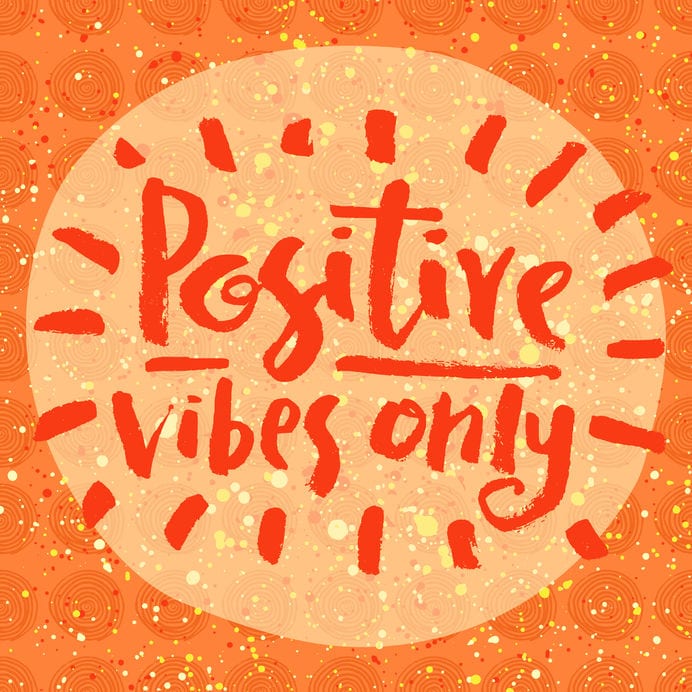
POSITIVE SELF-TALK
Self-talk is what you say to yourself in your head. It is based on your belief system and can be positive or negative. When people change their negative self-talk, such as “she’s provoking me,” to positive self-talk, such as “I can handle this without being mean,” they feel less hostile towards the other person. The following are some examples of positive self-talk:
- I can stay calm. I don’t need to win arguments.
- I can be angry without using violence or hurting others.
- My number one goal is to be nonviolent—I can do that.
- What others say doesn’t control me. I can control myself.
- It’s time to relax and slow down. I don’t need to feel threatened.
- I know that my anger comes from my old beliefs. It’s okay to walk away from this one.
GOOD COMMUNICATION
This requires cooperation, not competition. You have the right to say what you want to say, but if you are abusive, then it will work against the positive changes you are making. For good communication, both parties must listen. The most important goal is to remain nonviolent in your relationship.

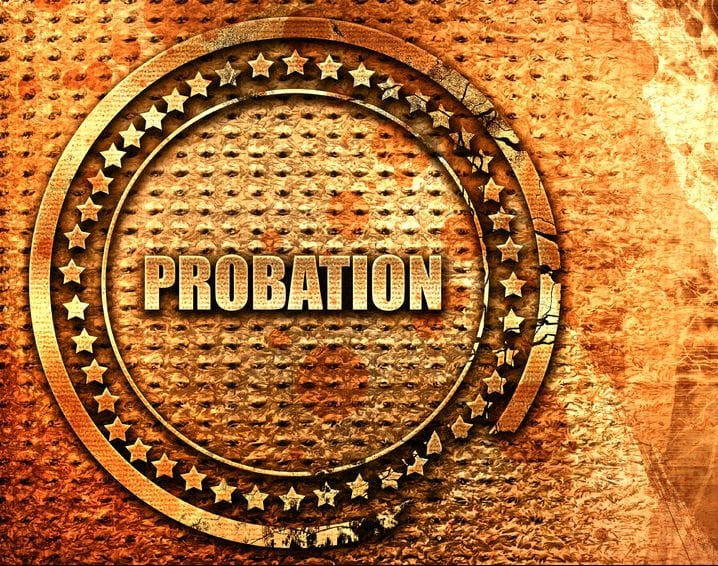
UNDERSTANDING YOUR COURT STATUS
Many men complete the BIP programs as a condition of probation. Others attend because of a family court order for protection. Although HCC-BIP is not part of the court system, we are required to report to the court or your probation officer about your participation. You may be suspended from the program if you re-offend, fail in attendance requirements, or are abusive or uncooperative. Under those circumstances, a report will be given to the court. This could result in jail time, starting the program over, or attending additional classes. We encourage you to attend regularly, participate, and complete the program.

THE DOMESTIC ABUSE LAW IN MISSOURI
Domestic assault, third degree, Section 565.074.
- A person commits the crime of domestic assault in the third degree if the act involves a family or household member or an adult who is or has been in a continuing social relationship of a romantic or intimate nature with the actor, as defined in section 455.010, RSMO, and:
- The person attempts to cause or recklessly causes physical injury to such family household member; or
- With criminal negligence, the person causes physical injury to such family or household member by means of a deadly weapon or dangerous instrument; or
- The person purposely places such family or household member in apprehension of immediate physical injury by any means; or
- The person recklessly engages in conduct which creates a grave risk of death or serious physical injury to such family or household member; or
- The person knowingly causes physical contact with such family or household member knowing the other person will regard the contact as offensive; or
- The person knowingly attempts to cause or causes the isolation of such family or household member by unreasonably and substantially restricting or limiting such family or household member’s access to other persons, telecommunication devices or transportation for the purpose of isolation.
- Except as provided in subsection 3 of this section, domestic assault in the third degree is a class A misdemeanor.
- A person who has pleaded guilty to or been found guilty of the crime of domestic assault in the third degree more than two times against any family or household member as defined in section 455.010, RSMO, is guilty of a class D felony for the third or any subsequent commission of the crime of domestic assault. The offenses described in this subsection may be against the same family or household member or against different family or household members.

NO-CONTACT ORDERS AND ORDER FOR PROTECTION
A no-contact order means that you cannot go to your partner’s residence or contact her in any way without the court’s permission. You cannot have any communication even if your partner makes contact first or gives you permission. You are not allowed to watch her home or place of work, follow or stop her in any public place, or go to your child’s school without the court’s permission.
As with a no-contact order, orders for protection do not all you to watch your partner’s home or place of work, follow or stop her in any public place, or go to your child’s school without the court’s permission. Orders can be changed but only by a judge. With a family court order for protection (OFP), either party can ask for a review hearing to change the order. Remember, you are the only one who can violate the OFP and be criminally charged. The court is not telling your partner what she can and cannot do—the order applies to you.

CONSEQUENCES OF RE-OFFENDING
If there is and OFP against you and you break the order, you will be guilty of a class A misdemeanor Domestic assault in the third degree is a Class A in Missouri punishable by up to one year in jail and a fine up to $1000, or both; however, if the offense is a third or subsequent conviction for third degree domestic assault or the equivalent (whether the prior convictions occurred in Missouri or another state or country), the crime is a class D felony punishable by up to one year in jail or up to four years in prison and a fine up to $5000, or both.
DEFINITIONS
- “Abuse” includes but is not limited to the occurrence of any of the following acts, attempts or threats against a person who may be protected pursuant to this chapter, except abuse shall not include abuse inflicted on a child by accidental means by an adult household member or discipline of a child, including spanking, in a reasonable manner:
- “Assault,” purposely or knowingly placing or attempting to place another in fear of physical harm;
- “Battery,” purposely or knowingly causing physical harm to another with or without a deadly weapon;
- “Coercion,” compelling another by force or threat of force to engage in conduct from which the latter has a right to abstain or to abstain from conduct in which the person has a right to engage;
- “Harassment,” engaging in a purposeful or knowing course of conduct involving more than one incident that alarms or causes distress to an adult or child and serves no legitimate purpose. The course of conduct must be such as would cause a reasonable adult or child to suffer substantial emotional distress and must actually cause substantial emotional distress to the petitioner or child. Such conduct might include, but is not limited to:
- Following another about in a public place or places;
- Peering in the window or lingering outside the residence of another; but does not include constitutionally protected activity.
- “Sexual assault,” causing or attempting to cause another to engage involuntarily in any sexual act by force, threat of force, duress, or without that person’s consent;
- “Unlawful imprisonment,” holding, confining, detaining or abducting another person against that person’s will;
- “Adult,” any person seventeen years of age or older or otherwise emancipated;
- “Child,” any person under seventeen years of age unless otherwise emancipated;
- “Court,” the circuit or associate circuit judge or a family court commissioner;
- “Domestic violence,” abuse or stalking committed by a family or household member, as such terms are defined in this section;
- “Ex parte order of protection,” an order of protection issued by the court before the respondent has received notice of the petition or an opportunity to be heard on it;
- “Family” or “household member,” spouses, former spouses, any person related by blood or marriage, persons who are presently residing together or have resided together in the past, any person who is or has been in a continuing social relationship of a romantic or intimate nature with the victim, and anyone who has a child in common regardless of whether they have been married or have resided together at any time;
- “Full order of protection,” an order of protection issued after a hearing on the record where the respondent has received notice of the proceedings and has had an opportunity to be heard;
- “Order of protection,” either an ex parte order of protection or a full order of protection;
- “Pending,” exists or for which a hearing date has been set;
- “Petitioner,” a family or household member who has been a victim of domestic violence, or any person who has been the victim of stalking or sexual assault, or a person filing on behalf of a child pursuant to section 455.503 who has filed a verified petition pursuant to the provisions of section 455.020 or section 455.505;
- “Respondent,” the family or household member alleged to have committed an act of domestic violence, or person alleged to have committed an act of stalking or sexual assault, against whom a verified petition has been filed or a person served on behalf of a child pursuant to section 455.503;
- “Sexual assault,” as defined under subdivision (1) of this section;
- “Stalking,” is when any person purposely engages in an unwanted course of conduct that causes alarm to another person, or a person who resides together in the same household with the person seeking the order of protection when it is reasonable in that person’s situation to have been alarmed by the conduct. As used in this subdivision:
- “Alarm,” means to cause fear of danger of physical harm; and
- “Course of conduct,” means a pattern of conduct composed of two or more acts over a period of time, however short, that serves no legitimate purpose. Such conduct may include, but is not limited to, following the other person or unwanted communication or unwanted contact.


